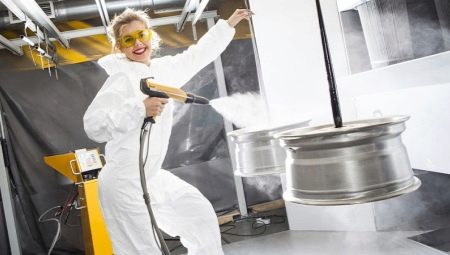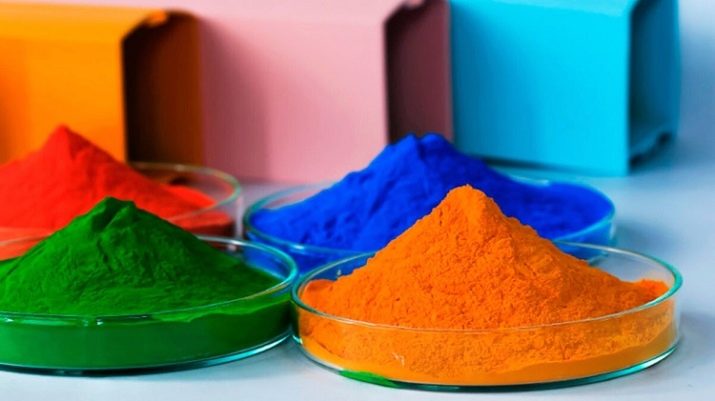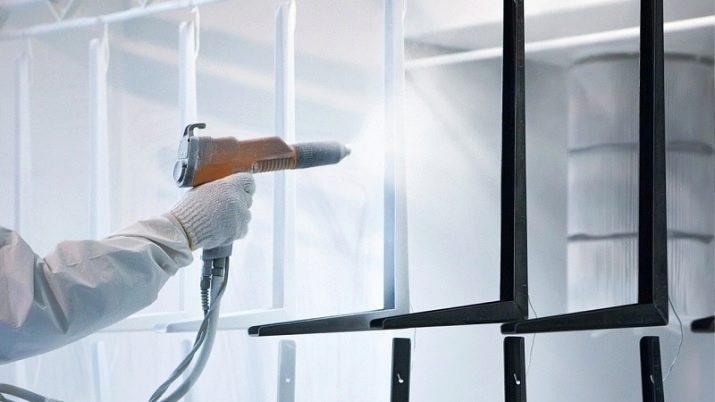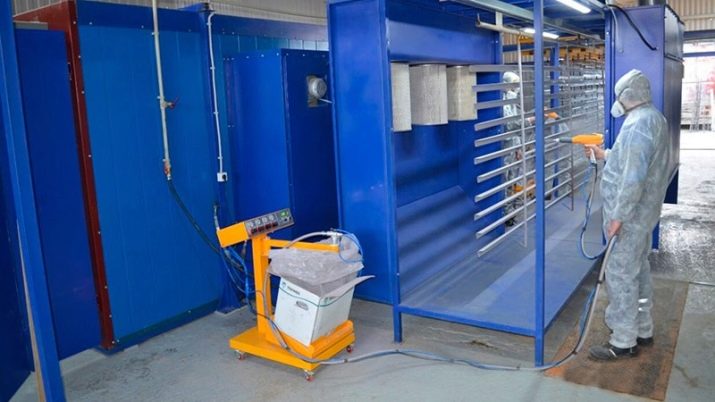All about the profession of powder painting painter

Even the “simplest” spheres of activity can be fraught with surprises. But by carefully studying the available information, you can easily avoid all kinds of problems. Some will be interested in learning everything about the profession of a powder painting painter - what he does, where he studies, as well as how his workplace is organized.
Peculiarities
The fact that the job is called a powder paint painter is no reason for complacency. Powdered dye is sometimes no less hazardous to health than its liquid counterpart, and it is even more difficult to avoid contact. It is imperative to protect yourself from the ingress of coloring compositions.
Powder painting involves the use of an electrostatic effect in which the colorant is electrically charged and thereby adheres to the surface.
This processing method is used in the following areas:
- car service;
- when painting sports equipment;
- to give the desired color to aluminum profiles, metal sheets;
- when painting ceramic materials.

Responsibilities
A powder paint painter should know:
- labor protection standards;
- safety regulations;
- types, official and everyday names, features of the use of various coloring compositions;
- rules for the formation of dye mixtures;
- the technology of applying the coloring powder;
- a methodology for assessing the finished paint and varnish coating and the quality of one's own work;
- rules for determining the safety of previous coatings;
- rules for preparing the surface for painting.
This specialist himself adjusts all the mechanisms used and prepares them for use. He performs the following works:
- applies powder paints to a wide variety of surfaces;
- removes scale, rust, minor mechanical defects from the treated surfaces;
- applies corrosion inhibitors when necessary;
- applies letters and more complex stencil inscriptions;
- independently prepares simple stencils;
- selects the color scheme according to the sample;
- primes, polishes and spatters surfaces;
- seals the seams of plasterboard sheets;
- takes measures against splashing paint on foreign surfaces and objects.

Education
Various training centers for vocational guidance, for example, NPF "Elstar", the center for development and training AMIKA, are engaged in the preparation of powder painters. The licensed training center "PromTechnika" will also be a good alternative. In the process of preparation, a number of skills and information will be mastered:
- in the field of metallurgy and materials science;
- in the field of the chemical composition of paints;
- in the field of drying paint and varnish coatings;
- concerning the preparation of building structures and vehicles for painting.
In addition to the already named educational institutions, powder painting painters are trained:
- at the training center of the group of companies Speco;
- at the Phoenix Medical Center;
- at the Primatek training center (one of the leading institutions of this kind in Russia).
Place of work
Powder painting masters are exposed to a wide variety of harmful influences. They have to work at heights and face low or high temperatures. Workplaces are often poorly lit and exposed to drafts. In industrial plants, polymerization ovens are used. Some of them run on natural gas, while others use electricity. Industrial powder coating chambers can be designed for air recovery or for cleaning it with filters. If the volumes of paint are relatively small, tribostatic sprayers can be used.
Regardless of the equipment used, you must not smoke, eat, take medicine or drink water in the workplace. Industrial powder coating is carried out only in rooms equipped with powerful exhaust ventilation.
Here are a few more points:
- the floor must have a solid grounding;
- fire-fighting equipment must comply with GOST 12.3.005-75 and GOST 12.3.002-75;
- all equipment must be protected from explosion and fire.



